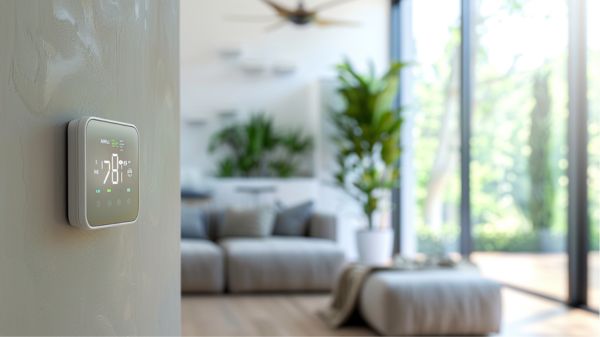As businesses increasingly focus on sustainability and cost management, adopting energy-efficient lighting practices becomes imperative. Among the myriad strategies available, certain approaches stand out for their ability to markedly reduce energy consumption and operational costs. Today we’ll be discussing top energy saving lighting tips for your businesses.
Whether it’s upgrading to LED lighting, optimizing natural light, or integrating smart sensors, each method offers unique benefits. However, the challenge lies in identifying which strategies will deliver the best return on investment for your specific business environment. By exploring these seven tips, companies can not only enhance their energy efficiency but also contribute to a more sustainable future. What remains to be seen is how these practices can be implemented effectively across different industries.
Key Takeaways
- Upgrade to LED lighting, significantly reducing energy use and maintenance costs.
- Install occupancy sensors to automatically turn off lights in unoccupied areas.
- Implement dimmer controls to adjust light intensity and save energy.
- Maximize use of natural lighting through strategic placement of windows and skylights.
- Educate employees on energy-saving practices, enhancing conscious use of lighting.
Conduct an Energy Audit
Initiating a thorough energy audit is the first strategic step businesses should take to uncover energy inefficiencies, particularly within their lighting systems. This process not only highlights areas where energy consumption can be improved but also pinpoints actionable pathways towards integrating energy-efficient lighting solutions.
By establishing a clear baseline of current usage, an energy audit empowers businesses with the knowledge to make data-driven decisions regarding lighting upgrades. The audit involves a detailed evaluation of existing lighting setups, including an assessment of the types of lamps used, their wattage, and their placement within the facility.
Such meticulous scrutiny reveals critical inefficiencies that, when addressed, can lead to substantial cost reductions. Additionally, tools like the Take Control & Save calculator enhance the audit by estimating the financial benefits and potential rebates achievable through proposed modifications.
It is crucial to examine the compatibility between bulb types and dimmer switches to guarantee peak performance and additional energy savings. Ultimately, the insights garnered from an energy audit allow for the formulation of a tailored strategy aimed at enhancing lighting efficiency within business premises.
This strategic approach not only reduces overhead costs but also contributes to broader environmental sustainability goals, marking a significant step towards operational liberation.
Upgrade to LED Lighting
Following the valuable insights gained from an energy audit, businesses are well-prepared to make impactful changes, such as upgrading to LED lighting. The shift from traditional lighting solutions to LED technology not only promises substantial savings in energy costs but also enhances the operational environment.
Upgrading to LED lighting offers several compelling advantages:
- Energy Efficiency: LED lights use about 70% less energy than incandescent bulbs, directly translating to lower electricity bills.
- Cost-Effective: Over 25,000 hours, the cost to light an area with LEDs is approximately $40 compared to $240 for incandescent bulbs, highlighting substantial long-term savings.
- Longevity: LEDs have a lifespan of around 25,000 hours, reducing the frequency and cost associated with replacements.
- Reduced Cooling Needs: Operating at lower temperatures, LEDs minimize heat generation, thereby reducing cooling expenses.
- Enhanced Productivity: The high CRI of LEDs improves visual clarity, which can boost employee productivity by creating a better work environment.
In line with making informed appliance choices, upgrading to LED lighting is a strategic decision that aligns with broader energy-saving strategies, promoting not just individual savings but also contributing to a more sustainable environmental impact.
Businesses aiming to save money and promote a sustainable work culture will find upgrading to LED lighting a smart and profitable investment. This proactive approach not only curtails energy costs but also supports a healthier planet by reducing carbon footprints.
Install Occupancy Sensors
Building on the momentum of upgrading to LED lighting, installing occupancy sensors is another smart strategy for businesses looking to further reduce energy consumption and enhance operational efficiency.
Occupancy sensors automatically deactivate lights in unoccupied spaces, greatly cutting down on energy waste and reducing lighting costs. This technology not only offers up to 30% in energy savings but also promotes a sustainable business ethos by lowering greenhouse gas emissions.
Occupancy sensors enhance workplace convenience, eliminating the need for manual lighting adjustments in frequently used areas. Some advanced models incorporate daylight harvesting, adjusting artificial lighting in response to natural light availability, thereby optimizing energy use even further.
Here’s a quick overview of how occupancy sensors can benefit your business:
| Feature | Benefit | Impact |
|---|---|---|
| Automatic shut-off | Reduces energy waste | Lower operational costs |
| Energy savings | Up to 30% reduction | Decreased lighting expenses |
| Daylight harvesting | Adjusts based on natural light | Enhanced energy efficiency |
| Enhanced convenience | No manual switching | Improved employee experience |
| Sustainable approach | Lowers greenhouse emissions | Promotes eco-friendly practices |
Utilize Natural Lighting
After enhancing energy efficiency through the use of occupancy sensors, businesses can further reduce their ecological footprint by leveraging natural lighting. Utilizing natural light not only saves energy but also guarantees that employees remain comfortable, fostering a productive and satisfying work environment.
By maximizing the infusion of daylight, companies can notably cut down on the use of electric lighting fixtures during peak daylight hours, thereby reducing energy costs and reliance on artificial lighting.
Here are practical steps to optimize the use of natural light:
- Incorporate more windows and skylights to increase the amount of natural light entering the building, thereby reducing the need for artificial lighting.
- Design workspaces to maximize exposure to natural light, guaranteeing that work areas are ideally positioned to benefit from daylight.
- Use light-colored walls and reflective surfaces to enhance the distribution of natural light throughout the office space. Implementing features like light tubes can further channel daylight into central areas of the workspace, boosting brightness and reducing the need for supplemental lighting.
- Monitor and maintain a comfortable temperature to guarantee natural light does not increase indoor heat excessively.
- Educate employees on the benefits of natural light, encouraging the minimization of artificial lighting use when not necessary.
Implement Dimmer Controls
Implementing dimmer controls in a business setting is a straightforward yet effective strategy for optimizing lighting efficiency and reducing energy consumption. By allowing lights to operate at lower intensities when full brightness is unnecessary, businesses can achieve significant energy savings.
Dimmer controls provide the flexibility to adjust lighting according to the specific needs of different times of the day or the type of activity occurring, which directly contributes to a reduction in electricity consumption.
With the cost of dimmer switches ranging from $10 to $25, the initial investment is minimal compared to the potential savings on lighting costs. The adaptability offered by dimmer controls not only helps in cutting down energy expenses but also extends the lifespan of lighting fixtures by reducing the power supplied to them. This can lead to up to 20% savings on lighting expenses.
Moreover, the ability to customize light levels enhances employee comfort, improving overall productivity and job satisfaction. It also fosters a culture of energy efficiency among staff, as they observe proactive measures being taken to reduce energy waste.
Opt for Energy-Efficient Signage
Businesses seeking to enhance their energy efficiency should consider opting for energy-efficient signage. This strategic change not only aligns with environmental sustainability but also offers considerable financial benefits by reducing utility costs.
Shifting to signage options like LED-lit displays or solar-powered solutions can drastically decrease the operational expenses associated with traditional lighting methods.
Here are key advantages of adopting energy-efficient signage:
- Reduced Energy Consumption: LED-lit displays use about 70% less energy than traditional incandescent bulbs, markedly lowering utility costs.
- Longevity and Lower Maintenance: LEDs have a lifespan of approximately 50,000 hours, far outpacing the 1,000 hours typical of incandescent bulbs, which reduces replacement and maintenance costs.
- Enhanced Visibility: Upgrading to LED signage can improve the brightness and visibility of your displays, making them more effective even in low-light conditions.
- Sustainability: ENERGY STAR qualified exit signs can prevent around 500 pounds of greenhouse gas emissions per sign, contributing positively to your company’s environmental goals.
- Solar Power Advantage: Incorporating solar-powered signage eliminates electricity costs entirely, providing a sustainable and cost-effective solution for outdoor advertising.
Related Post: The 5 Best Solar Powered Motion Spotlights for Enhanced Security and Convenience.
Maintain and Optimize HVAC Systems
Shifting from energy-efficient signage, it is vital for businesses to also focus on maintaining and optimizing their HVAC systems. Regular HVAC maintenance, efficient filter replacements, and seasonal system checks are essential strategies to reduce energy consumption and enhance system performance. These measures not only guarantee operational efficiency but also contribute to significant cost savings in utility bills.
Regular HVAC Maintenance
Maintaining HVAC systems through regular check-ups and seasonal tune-ups can boost their efficiency by up to 15%, considerably reducing energy costs and enhancing comfort in the workplace.
Regular HVAC maintenance is essential for maximizing energy use and achieving substantial energy savings. By keeping these systems in peak condition, businesses can not only cut down on utility bills but also contribute to environmental sustainability.
Here are key practices in HVAC maintenance that can help businesses reduce energy consumption and maintain efficient operation:
- Annual Maintenance Checks: Extend the life of HVAC units by up to 5 years, guaranteeing efficient options are always at play.
- Professional Inspections: Identify and rectify inefficiencies, avoiding costly energy leaks and unexpected repairs.
- Seasonal Tune-ups: Enhance performance according to seasonal demands to maintain consistent energy use and comfort.
- Operational Efficiency: Verify the system operates at ideal levels to prevent problems that escalate energy use.
- Timely Repairs: Address issues promptly to maintain system efficiency and improve airflow, avoiding spikes in energy consumption.
Adopting these measures not only aids in maintaining an efficient HVAC system but also aligns with a proactive approach to managing workplace environments for better productivity and sustainability.
Efficient Filter Replacement
After exploring the broad benefits of regular HVAC maintenance, it is equally important to focus on specific practices that enhance system efficiency, such as efficient filter replacement.
Regularly changing or cleaning HVAC filters, especially during peak usage periods, can improve system efficiency by up to 15%. This straightforward action guarantees ideal airflow and minimizes energy consumption.
Using high-efficiency filters not only assists in maintaining cleaner indoor air by capturing more airborne particles but also contributes to the extended lifespan of HVAC systems. This is essential for businesses aiming to enhance their operational costs and sustainability efforts.
Conversely, dirty filters can greatly hinder airflow, causing the HVAC system to work harder. This inefficiency leads to increased energy usage and, consequently, higher utility bills.
Investing in a programmable filter replacement reminder system can be a wise choice for facility managers. Such systems guarantee that filter changes occur consistently and on schedule, further enhancing HVAC performance and energy savings.
According to the U.S. Department of Energy, simply replacing a clogged filter can reduce energy consumption by 5-15%, translating into considerable cost savings over time.
Embracing these practices not only boosts efficiency but also supports a business’s financial and environmental goals.
Seasonal System Checks
Why should businesses prioritize seasonal system checks for their HVAC units? Regular maintenance of HVAC systems is essential for guaranteeing their efficiency and longevity, particularly in business settings where air quality and temperature control directly impact employee productivity and comfort.
By integrating seasonal checks, businesses can notably lower their energy bills, enhance the effectiveness of their heating and cooling systems, and contribute to a more sustainable, renewable energy-oriented operation.
Key benefits of seasonal HVAC system checks include:
- Improved Efficiency: Regular tune-ups can boost system efficiency by up to 20%, which translates into lower energy consumption and reduced costs.
- Enhanced Air Quality: Clean, well-maintained systems improve the air quality indoors, creating a healthier environment for employees.
- Cost Savings: Preventive maintenance helps avoid costly repairs and extends the system’s lifespan, allowing for better financial planning and resource allocation.
- Energy Conservation: Efficient systems use less energy, aligning with goals to reduce reliance on non-renewable energy sources and decrease overall carbon footprint.
- Optimal Performance: Seasonal checks before peak usage times guarantee that air conditioning units perform at their best when needed most, avoiding downtime and discomfort.
Conclusion
In summary, adopting these energy-saving lighting strategies is vital for businesses aiming to reduce operational costs and enhance sustainability. By implementing measures such as LED upgrades, occupancy sensors, and natural lighting enhancements, companies can markedly lower energy consumption.
Regular audits and employee education further support these efforts by identifying inefficiencies and promoting conservation awareness. Collectively, these steps not only contribute to financial savings but also aid in the shift towards environmentally responsible business practices.




